CADILLAC FLEETWOOD 1993 2.G Owners Manual
Manufacturer: CADILLAC, Model Year: 1993, Model line: FLEETWOOD, Model: CADILLAC FLEETWOOD 1993 2.GPages: 386, PDF Size: 19.17 MB
Page 171 of 386
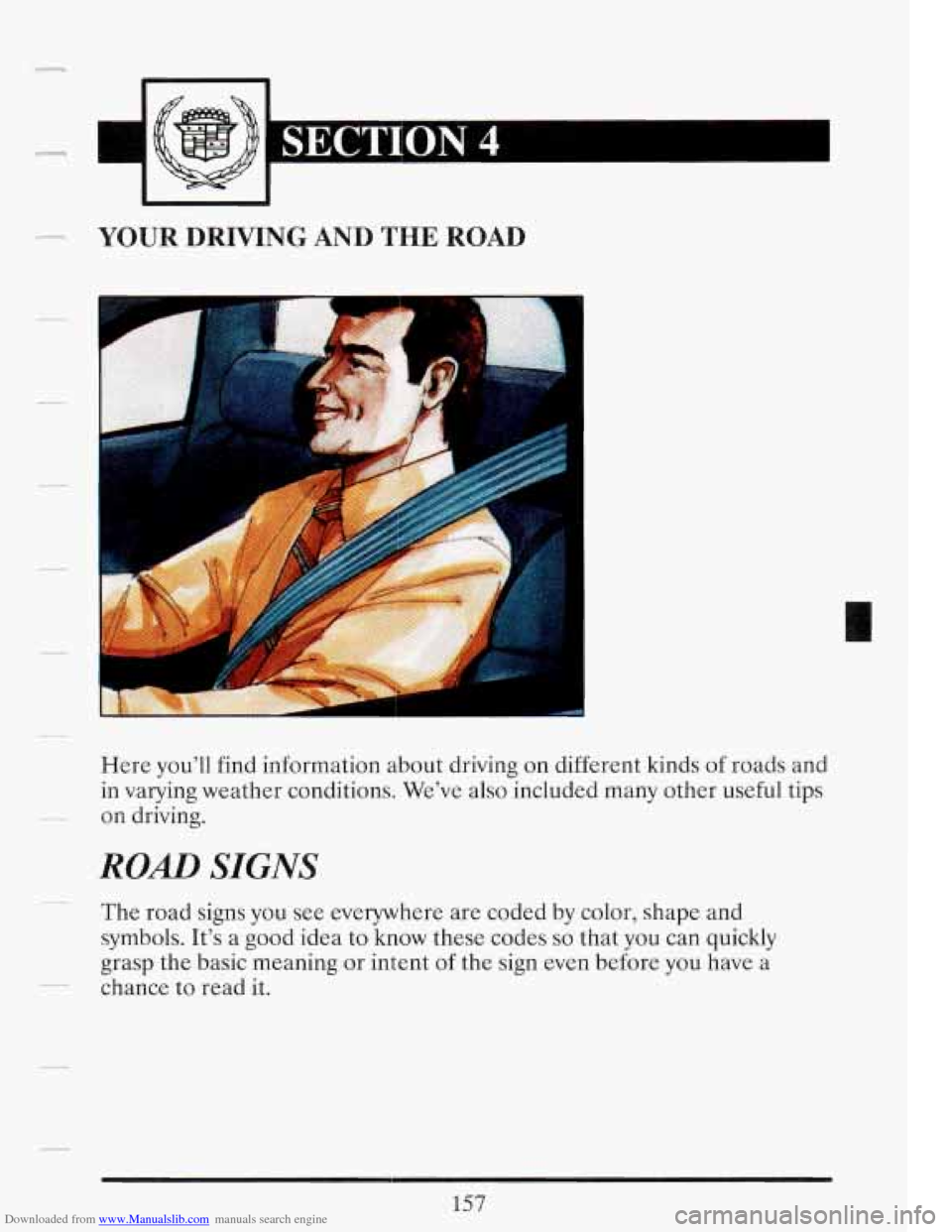
Downloaded from www.Manualslib.com manuals search engine Y KO!
YOUR DRIVING AND THE ROAD
Here you'll find information about driving on different kinds of roads and
in varying weather conditions. We've also included many other useful tips
on driving.
ROAD SIGNS
The road signs you see everywhere are coded by color, shape and
symbols. It's a good idea
to know these codes so that you can quickly
grasp the basic meaning or intent of the sign even before you have a
chance to read it.
_.
157
Page 172 of 386
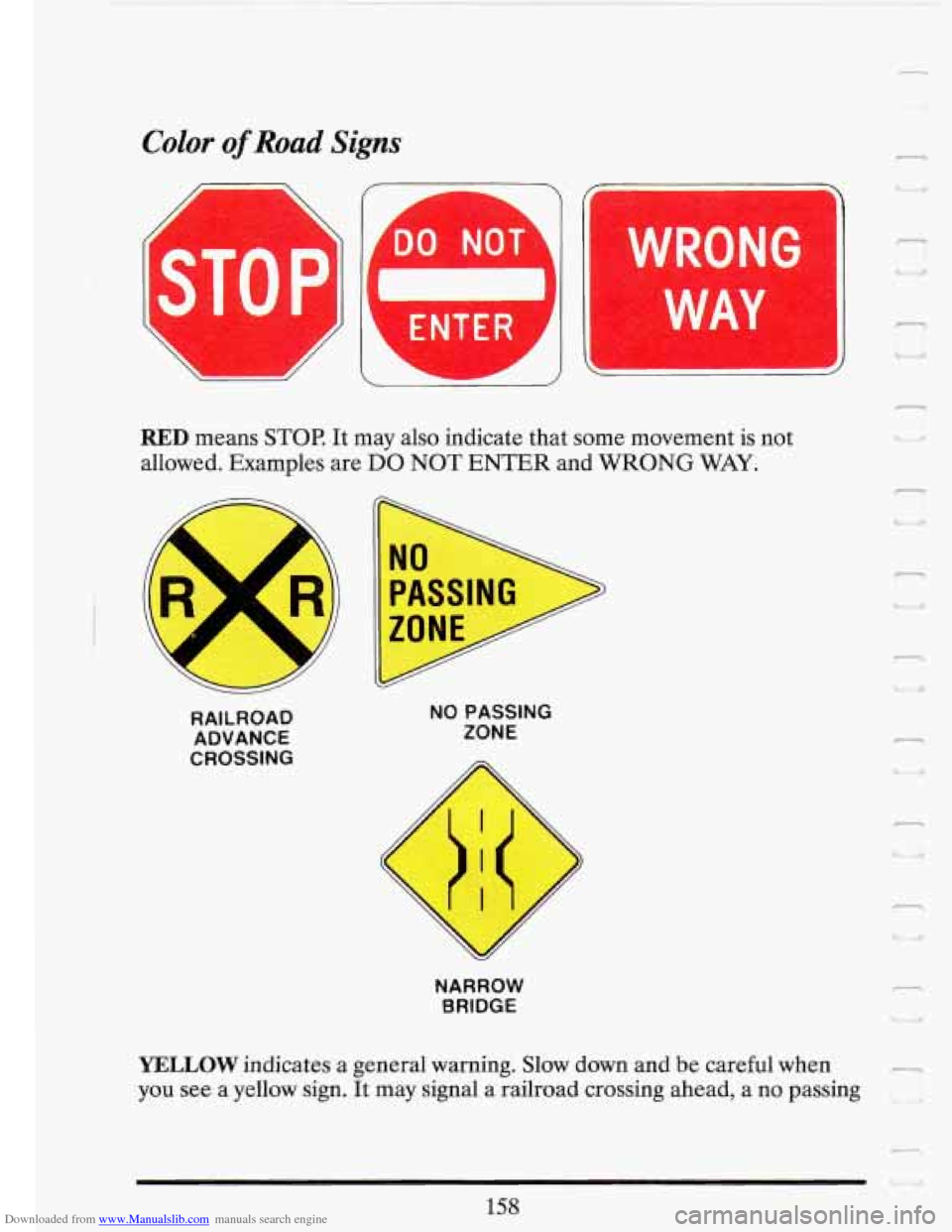
Downloaded from www.Manualslib.com manuals search engine Color of Road Signs
I
I'
' WRONG I ij
WAY I Y
Y
L
T
W I '!,
RED means STOP. It may also indicate that some movement is not
allowed. Examples are
DO NOT ENTER and WRONG WAY.
n
NO
i7 PASSING
ZONE 1
NO PASSING
ZONE
RAILROAD
ADVANCE
CROSSING
-I
r
-1 Y
NARROW BRIDGE
YELLOW indicates a general warning. Slow down and be careful when c_
you see a yellow sign. It may signal a railroad crossing ahead, a no passing
-7
158
Page 173 of 386
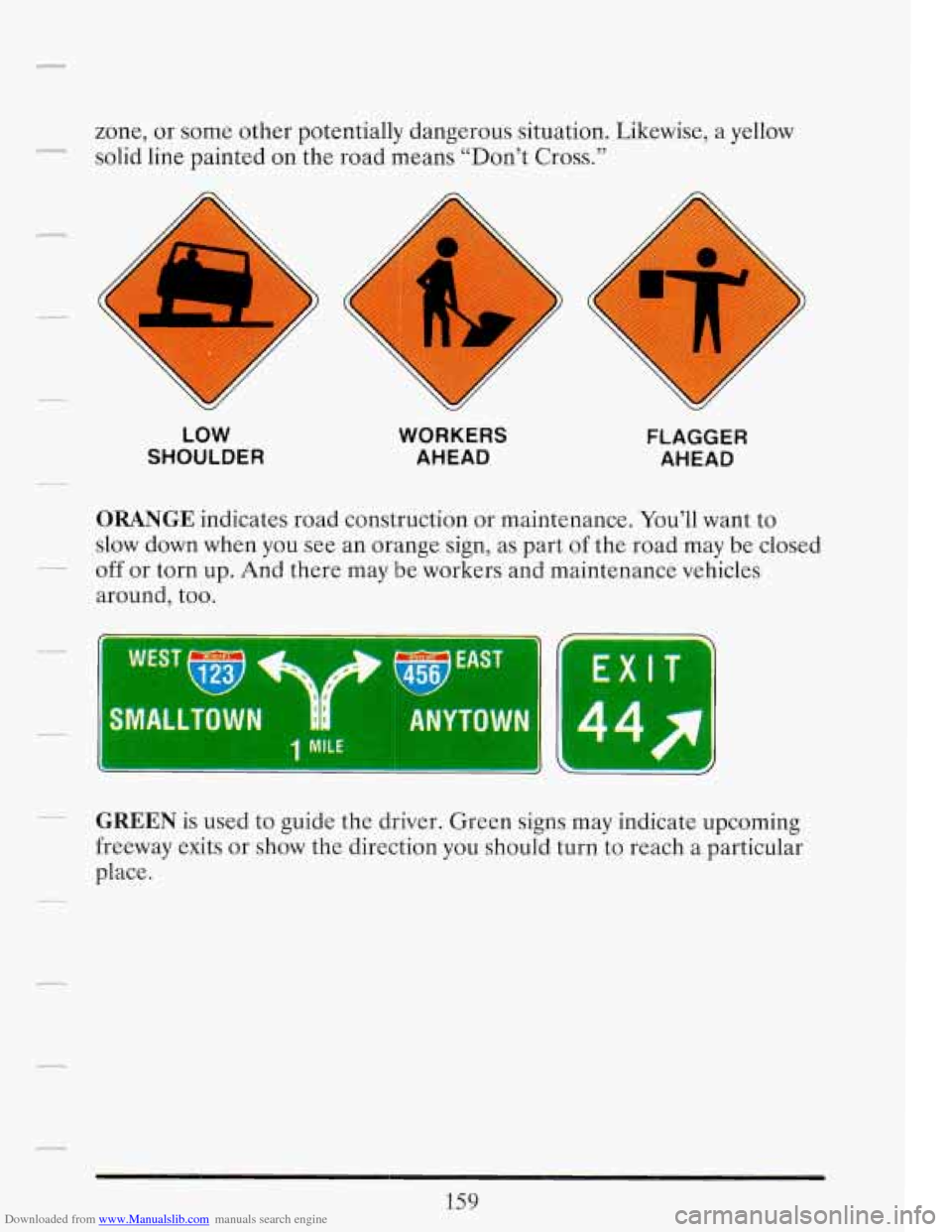
Downloaded from www.Manualslib.com manuals search engine zone, or some other potentially dangerous situation. Likewise, a yellow
solid line painted on the road means “Don’t Cross.”
LOW
SHOULDER
Y
WORKERS
AHEAD FLAGGER
AHEAD
ORANGE indicates road construction or maintenance. You’ll want to
slow down when you see an orange sign, as part
of the road may be closed
off or torn up. And there may be workers and maintenance vehicles
around, too.
WEST 1
GREEN is used to guide the driver. Green signs may indicate upcoming
freeway exits
or show the direction you should turn to reach a particular
place.
159
Page 174 of 386

Downloaded from www.Manualslib.com manuals search engine I
HOSPITAL INFORMATION
BLUE signs with white
letters show motorists’ services.
-
CANOEING
SWIMMING
f
P
BROWN signs point out recreation areas or points of historic or cultural
interest.
cn
L
Shape of Road Signs
The shape of the sign will tell you something, too.
160
Page 175 of 386
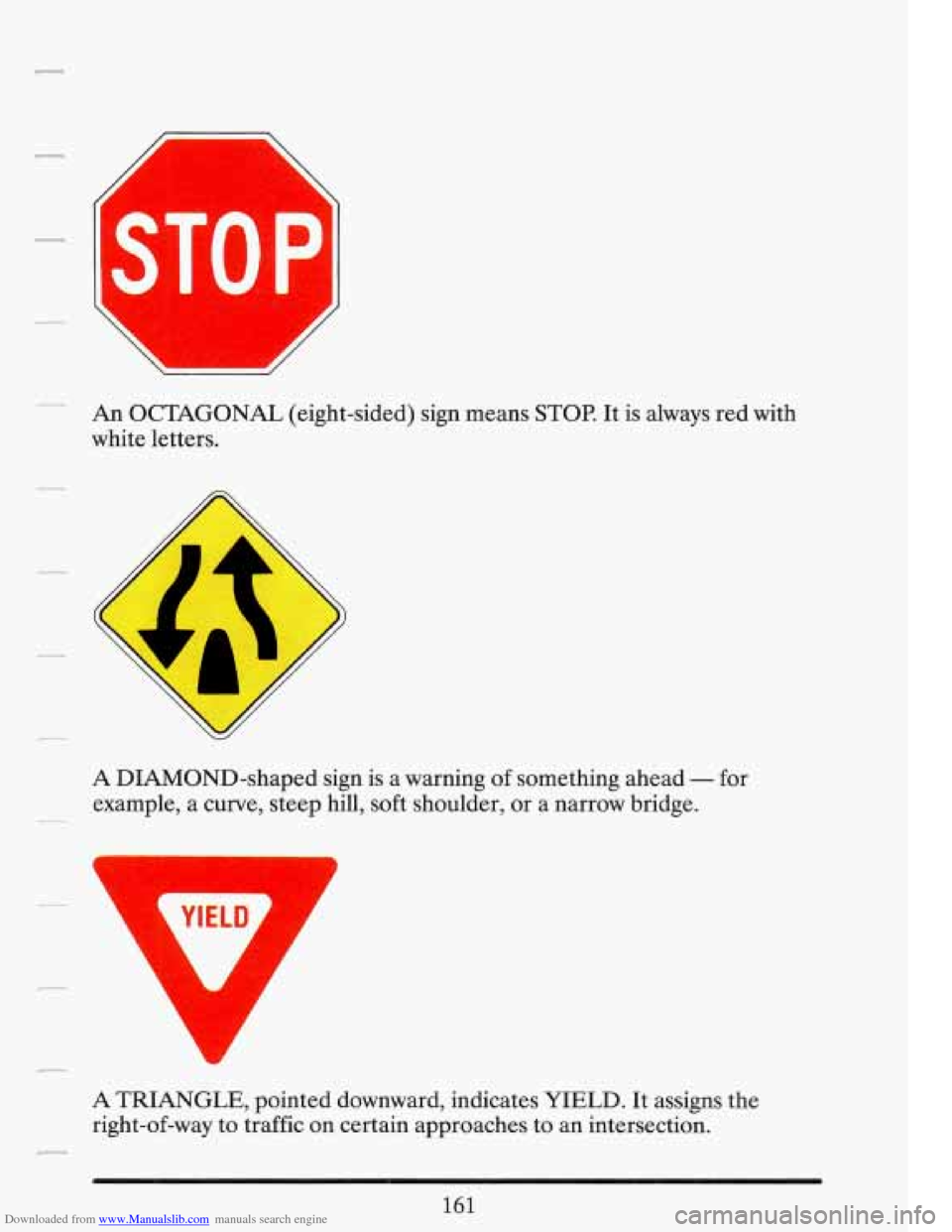
Downloaded from www.Manualslib.com manuals search engine r
A
- An OCTAGONAL (eight-sided) sign means STOP. It is always red with
white letters.
A DIAMOND-shaped sign is a warning of something ahead
- for
example, a curve, steep hill, soft shoulder, or a narrow bridge.
1 YIELD j
LA
A
A
A TRIANGLE, pointed downward, indicates YIELD. It assigns the
right-of-way
to traffic on certain approaches to an intersection.
Page 176 of 386
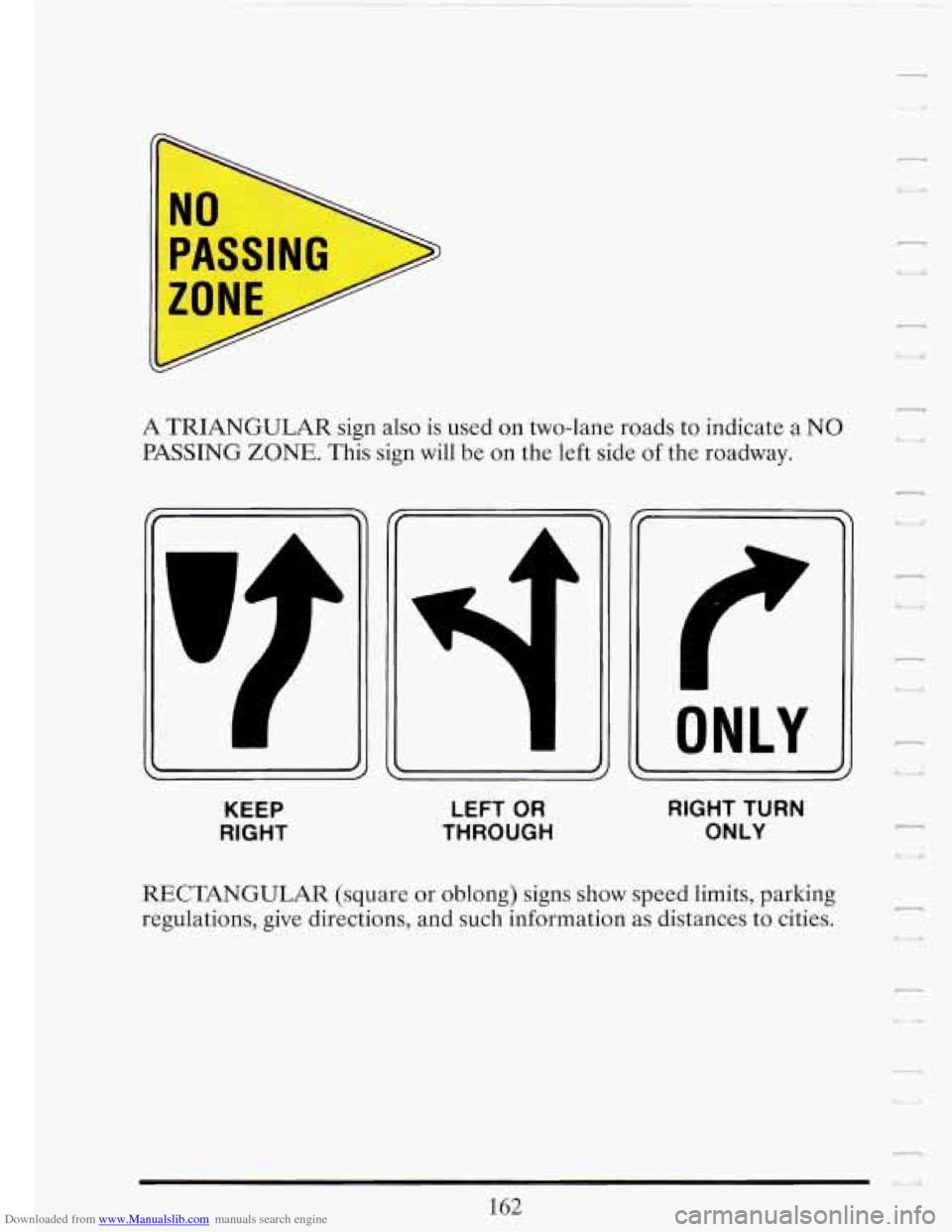
Downloaded from www.Manualslib.com manuals search engine n I' U
A TRIANGULAR sign also is used on two-lane roads to indicate a NO
PASSING ZONE. This sign will be on the left side of the roadway.
/r
KEEP
RIGHT
LEFT OR
THROUGH
ONLY
RIGHT TURN
ONLY
RECTANGULAR (square or oblong) signs show speed limits, parking
regulations, give directions, and such information as distances to cities.
r_
r
162
Page 177 of 386
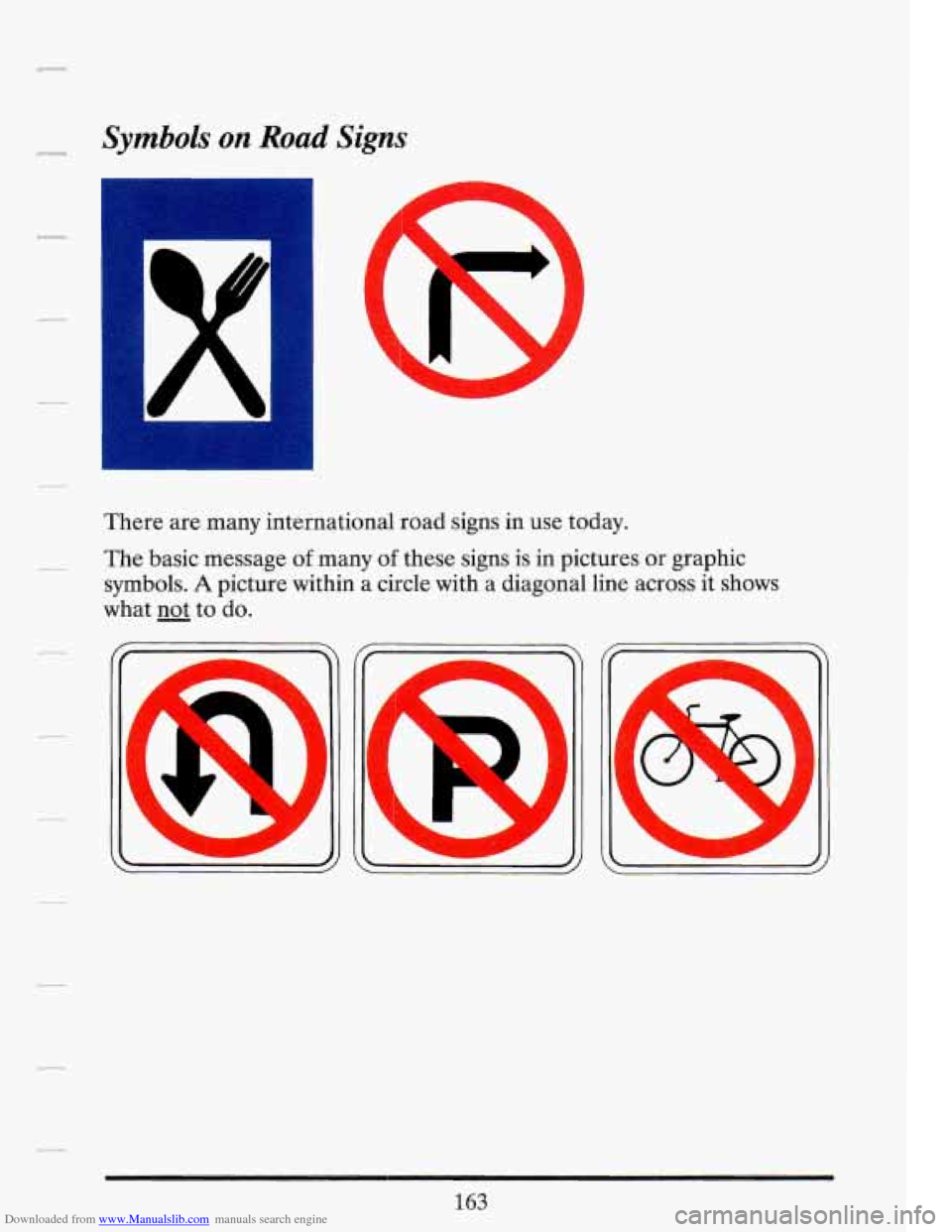
Downloaded from www.Manualslib.com manuals search engine __I Symbols on Road Signs
There are many international road signs in use today.
The basic message
of many of these signs is in pictures or graphic
svmbols.
A Dicture within a circle with a diagonal line across it shows
what
not to do.
I-
.
163
Page 178 of 386
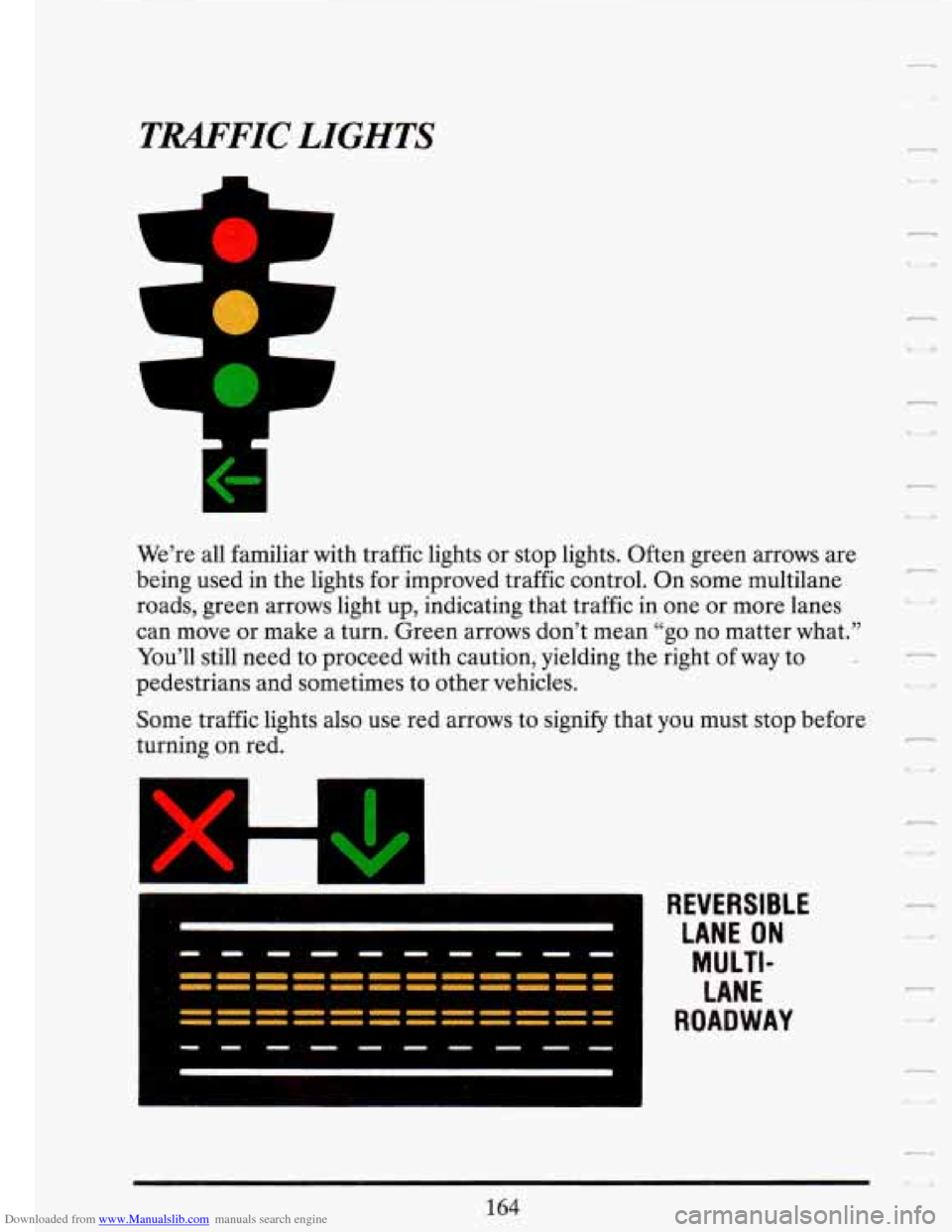
Downloaded from www.Manualslib.com manuals search engine TRAFFIC LIGHTS
r-
L1
We’re all familiar with traffic lights or stop lights. Often green arrows are
being used in the lights for improved traffic control. On some multilane
roads, green arrows light up, indicating that traffic in one or more lanes
can move or make a turn. Green arrows don’t mean “go no matter what.”
You’ll still need to proceed with caution, yielding the right
of way to -
pedestrians and sometimes to other vehicles.
Some traffic lights also use red arrows to signify that
you must stop before
turning on red.
REVERSIBLE LANE ON
M 0 LTl-
LANE
ROADWAY
164
r
U
Page 179 of 386
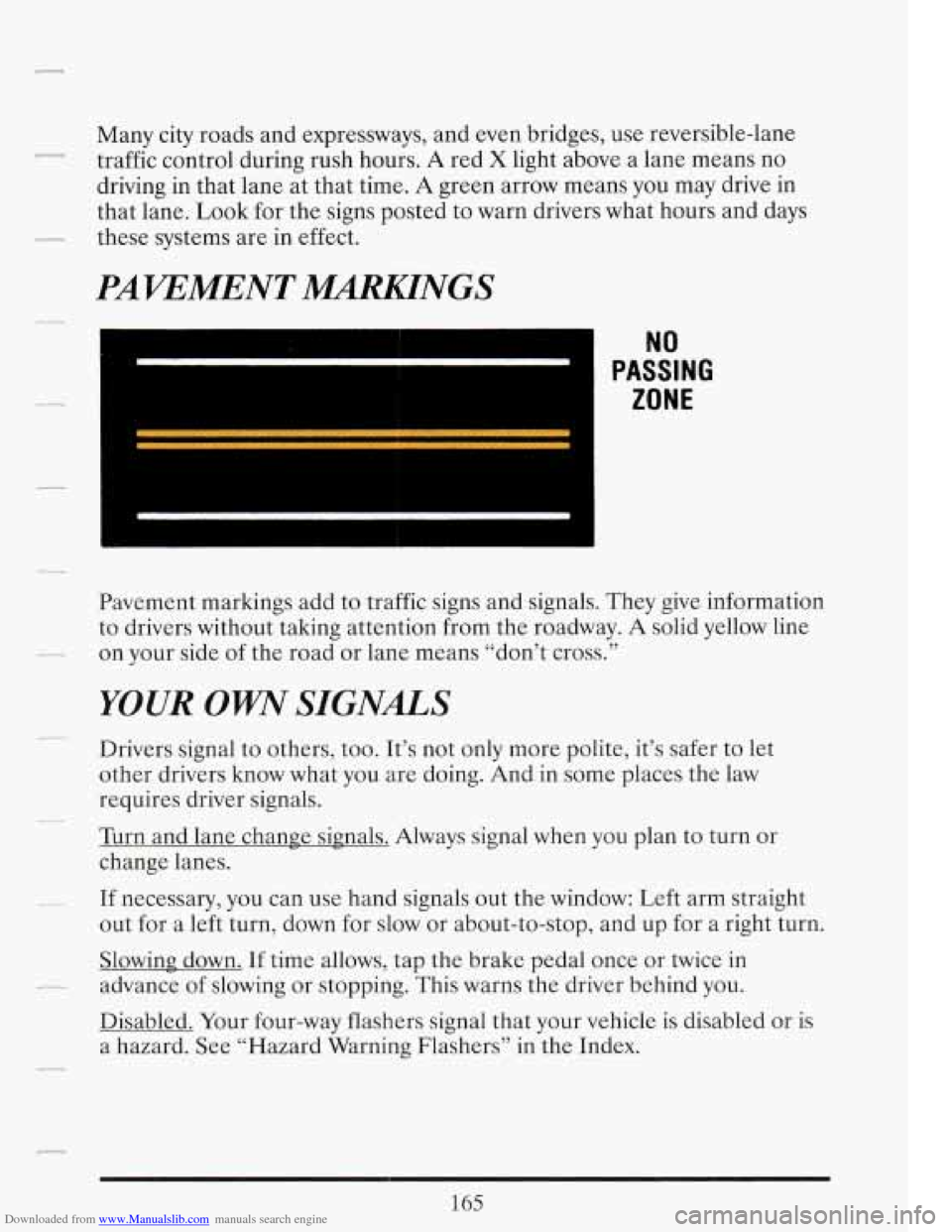
Downloaded from www.Manualslib.com manuals search engine Many city roads and expressways, and even bridges, use reversible-lane
traffic control during rush hours.
A red X light above a lane means no
driving in that lane at that time.
A green arrow means you may drive in
that lane.
Look for the signs posted to warn drivers what hours and days
these systems are in effect.
Pavement markings add
to traffic signs and signals. They give information
to drivers without taking attention from the roadway.
A solid yellow line
on your side of the road or lane means “don’t cross.’’
YOUR OWW SIGNALS
Drivers signal to others, too. It’s not only more polite, it’s safer to let
other drivers know what you are doing. And in some places the law
requires driver signals.
Turn and lane change signals. Always signal when you plan to turn or
change lanes.
If necessary, you can use hand signals out the window: Left arm straight
out for a left turn, down for slow or about-to-stop, and up for a right turn.
Slowing down. If time allows, tap the brake pedal once or twice in
advance of slowing or stopping. This warns the driver behind
you.
Disabled. Your four-way flashers signal that your vehicle is disabled or is
a hazard. See “Hazard Warning Flashers” in the Index.
165
Page 180 of 386
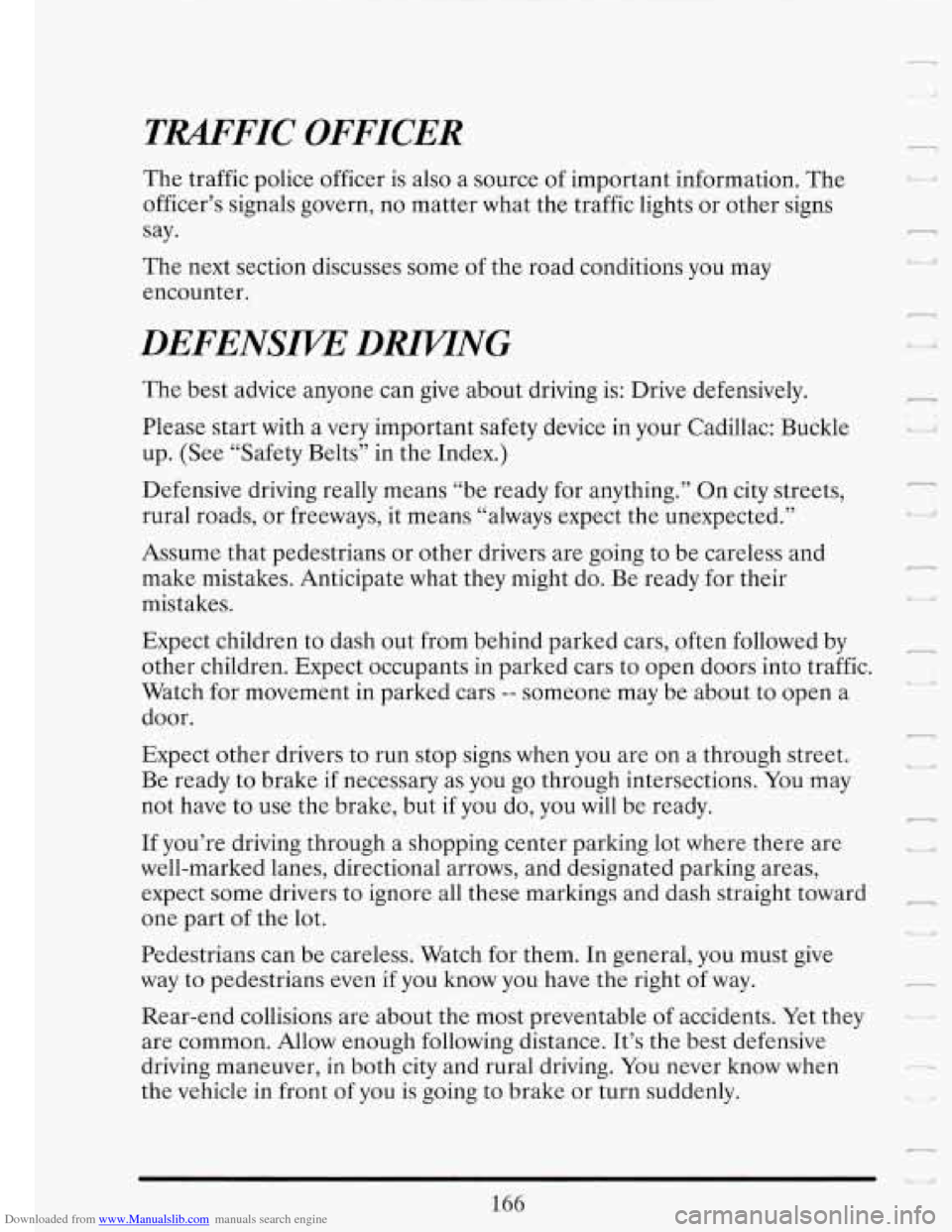
Downloaded from www.Manualslib.com manuals search engine TRAFFIC OFFICER 7 .. I: The traffic police officer is also a source of important information. The
officer’s signals govern, no matter what the traffic lights or other signs
say.
The next section discusses some of the road conditions you may
encounter.
DEFENSIVE DlUVTNG
The best advice anyone can give about driving is: Drive defensively.
Please start with a very important safety device
in your Cadillac: Buckle
up. (See “Safety Belts” in the Index.)
Defensive driving really means “be ready for anything.’’ On city streets,
rural roads, or freeways, it means “always expect the unexpected.”
Assume that pedestrians or other drivers are going to be careless and
make mistakes. Anticipate what they might do. Be ready for their
mistakes.
Expect children to dash out from behind parked cars, often followed by
other children. Expect occupants in parked cars to open doors into traffic.
Watch for movement
in parked cars -- someone may be about to open a
door.
Expect other drivers to run stop signs when you are on a through street.
Be ready to brake if necessary as you
go through intersections. You may
not have to use the brake, but
if you do, you will be ready.
If you’re driving through a shopping center parking lot where there are
well-marked lanes, directional arrows, and designated parking areas,
expect some drivers
to ignore all these markings and dash straight toward
one part of the lot.
Pedestrians can be careless. Watch for them. In general, you must give
way to pedestrians even if you know you have the right of way.
Rear-end collisions are about the most preventable of accidents. Yet they
are common. Allow enough following distance.
It’s the best defensive
driving maneuver,
in both city and rural driving. You never know when
the vehicle in front of you is going to brake or turn suddenly.
166
n
U i I‘
n
u
! I,
r
r
d
-
1